Suchergebnisse für "Factsheet%3A Energietechnologien gestalten%2C die f%C3%BCr alle sinnvoll und nutzbar sind"
Der städtische Untergrund als Rohstoffmine? Potential an Sekundärressourcen in der erdverlegten Infrastruktur
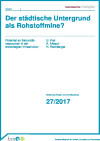
Machbarkeit eines Ressourcenkatasters zur Inventarisierung, Charakterisierung und Verortung der Materialbestände in den erdverlegten Infrastrukturnetzwerken österreichischer Stadtregionen. Das Ergebnis dient der ökonomischen Bewertung von Sekundärrohstoffpotenzialen.
Schriftenreihe
27/2017
U. Kral, A. Allesch, H. Rechberger
Deutsch, 73 Seiten
Downloads zur Publikation
Workshop: Zeitstrategien ökologischer Innovationspolitik
31. Oct 2003
Tagungszentrum Katholische AkademieBerlin, DE
Auf Zeitfenster bauen? Politikstrategien für nachhaltige Bauinnovationen
Projektpräsentation: IMMO-RATE
Der Leitfaden für das Immobilienrating nachhaltiger Wohnbauten wird am 22. Juni in Wien und am 13. Juli in Bregenz vorgestellt. Der Termin am 29. Juni ist abgesagt.
Energy research expenditure - corporate sector in Austria 2021

759.8 million in research expenditure was allocated to the topic of energy by domestic companies in 2021. This figure was 16% higher than the comparable figure from the 2019 survey. The report contains detailed figures and analyses of various technologies with regard to company and public R&D investments.
6/2024
A. Indinger, F. Bettin
Herausgeber: BMK, 2024
Deutsch, 66 Seiten
Kreislaufwirtschafts-Strategie 2022
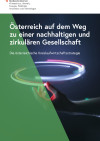
Im Rahmen des von der Europäischen Kommission ins Leben gerufenen Aktionsplans "Circular Economy", hat das BMK in Zusammenarbeit mit BMSGPK, BMAW und BML eine nationale Kreislaufwirtschaftsstrategie erarbeitet.
Herausgeber: BMK
Deutsch, 80 Seiten
Downloads zur Publikation
Smart Grids Pionierregion Oberösterreich
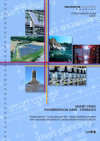
Strategien für ein zukunftsfähiges Energiesystem mit maximalem Einsatz erneuerbarer Ressourcen.
Forschungsforum
1/2011
Herausgeber: BMVIT
Deutsch, 6 Seiten
Downloads zur Publikation
Umweltpreis an Sonnenplatz Großschönau vergeben
Das Haus der Zukunft Projekt "Sonnenplatz Großschönau - Erstes europäisches Passivhausdorf zum Probewohnen®" wurde mit dem ÖGUT-Umweltpreis ausgezeichnet.
50 Jahre Internationale Energieagentur
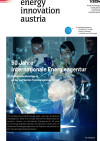
Österreichs Beteiligung an der weltweiten Forschungskooperation
energy innovation austria
1/2024
Herausgeber: BMK gemeinsam mit dem Klima- und Energiefonds
Deutsch, 16 Seiten
Downloads zur Publikation
Wärme aus der Tiefe
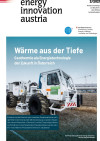
Geothermie als Energietechnologie der Zukunft in Österreich
energy innovation austria
2/2021
Herausgeber: BMK und Klima- und Energiefonds
Deutsch, 12 Seiten
Downloads zur Publikation
Status of Advanced Biofuels Demonstration Facilities in 2012
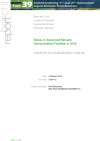
Der Bericht gibt einen Überblick über den Stand der Technik der Umwandlungstechnologien von Biomasse zu fortgeschrittenen Biotreibstoffen und stellt eine Ergänzung zu der vorhandenen Demonstrationsanlagen-Datenbank dar.
Herausgeber: IEA Bioenergy Task 39, BIOENERGY 2020+
Englisch, 209 Seiten
Downloads zur Publikation
IEA Bioenergy Task 39: Newsletter, Ausgabe 60, Oktober 2022

Der Schwerpunkt dieser Ausgabe liegt auf dem Artikel zum Thema „Biofuels in Austria – policy, production, and use“.
Tomas Ekbom, Glaucia Mendes Souza, Hannah Edgren
Herausgeber: IEA Bioenergy Task 39, 2022
Englisch, 21 Seiten
Downloads zur Publikation
IEA Bioenergy Task 39: Newsletter, Ausgabe 59, Juli 2022

Der Schwerpunkt dieser Ausgabe liegt auf dem Artikel zum Thema „Biofuels production and consumption in Belgium“.
Mahmood Ebadian, Tomas Ekbom, Glaucia Mendes Souza, Jack Saddler
Herausgeber: IEA Bioenergy Task 39, 2022
Englisch, 20 Seiten
Downloads zur Publikation
Projektpräsentation: IMMO-RATE - Leitfaden für das Immobilienrating nachhaltiger Wohnbauten (Wien)
22. Jun 2006
Erste Bank, Beatrixgasse 27, 6. Stock
1030 Wien, AT
Der Leitfaden "Immo-Rate - Bausteine und Tools für das Immobilienrating von nachhaltigen Wohnbauten" integriert zentrale Ergebnisse der Programmlinie "Haus der Zukunft" in das professionelle Immobilienrating von Finanzinstitutionen.
Projektpräsentation: IMMO-RATE - Leitfaden für das Immobilienrating nachhaltiger Wohnbauten (Bregenz)
13. Jul 2006
Rhomberg Bau GmbH, Mariahilfstraße 29
6900 Bregenz, AT
Der Leitfaden "Immo-Rate - Bausteine und Tools für das Immobilienrating von nachhaltigen Wohnbauten" integriert zentrale Ergebnisse der Programmlinie "Haus der Zukunft" in das professionelle Immobilienrating von Finanzinstitutionen.
Management der Belastungen aus dem Einzugsgebiet von Verbandskläranlagen im Sinne eines nachhaltigen Least Cost Plannings - ARAFIT
ARAFIT entwickelt einen regionalen, partizipativen Ansatz zum Management der Belastungen aus dem Einzugsgebiet von Verbandskläranlagen im Sinne eines nachhaltigen Least Cost Plannings. So werden im Bereich der regionalen Infrastruktur ressourceneffiziente, flexible, zukunftssichere Lösungen erreicht.
IEA C3E TCP: Kick-Off Call with the Austrian Ambassadors (2020)
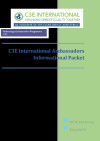
On the morning of Friday, 26th of June 2020, a kick-off call was organized with the Austrian representatives of the C3E Initiative as well as the newly appointed Austrian Ambassadors for the period of 2020 – 2022.
Herausgeber: IEA C3E TCP
Englisch
Downloads zur Publikation
IEA Bioenergy Task 39: Newsletter, Ausgabe 67, Juni 2025

Der Schwerpunkt dieser Ausgabe liegt auf dem Country Report aus Brasilien „A Biofuels Success Story Brazil“.
Tomas Ekbom, Glaucia Mendes Souza, Jeanette Fogelmark
Herausgeber: IEA Bioenergy TCP Task 39, 2024
Englisch, 23 Seiten
Downloads zur Publikation
Professor Faninger erhält Orden der Republik Österreich
Der Pionier in erneuerbaren Energien erhielt das Große Ehrenzeichen der Republik Österreich für 30 Jahre Engagement auf dem Gebiet der Solarthermie
Pilotkurs Thermische/r SanierungstechnikerIn im Baugewerbe
September - Dezember 2010
HTL Mödling, Technikerstraße 1-5
2340 Mödling, AT
Der Kurs wird von September bis Dezember 2010 abgehalten. Anmeldungen können ab sofort bis zum 23. August 2010 erfolgen.
IEA EBC Annex 80: Resilient Cooling of Buildings – Policy Recommendations (2024)

Empfehlungen für regulatorische Maßnahmen
Peter Holzer, Institute of Building Research & Innovation, Österreich; Pierre Jaboyedoff, Effin’Art, Schweiz; Emmanuel Bozonnet, La Rochelle Université, Frankreich; Ronnen Levinson, Lawrence Berkeley National Laboratory, USA; Mamak P. Tootkaboni, Politecnico Torino, Italien; Vincenzo Corrado, Politecnico Torino, Italien; Ed Arens, University of California, USA; Haley Gilbert, Affiliate of Lawrence Berkeley National Laboratory; Amanda Krelling, Federal University of Santa Catarina, Brazil; Anaïs Machard, CSTB, Scientific and Technical Center for Buildings, France; Wendy Miller, Queensland University of Technology, Australia; Stephen Selkowitz, Affiliate of Lawrence Berkeley National Laboratory Hui Zhang, Lawrence Berkeley National Laboratory, USA
Herausgeber: IEA EBC Annex 80, 2024
Englisch, 75 Seiten
